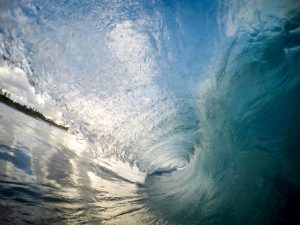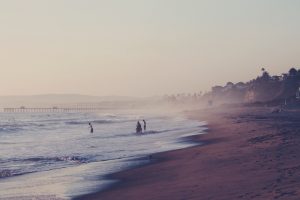Why Is RO purifier Important For People Who Live By The Coast
Ever had a friend who
lives by the sea? The breathtaking view of the waves and the sound of
water hitting the shore and the sea birds hovering for hours and not to
forget the breeze. Beach houses or apartments seems like a perfect place
to lead a happy life. This article is all about the problems that
people would face in terms of availability of pure drinking water.

Natural sources of drinking water vary to
the type of region we occupy. Most parts of the interior of the land
mass, unless blessed with a perennial river, have to rely on freshwater
lakes or the groundwater or rainfall for drinking. The options are
lesser for the coastal areas. Rivers reaching the coastal areas are too
contaminated for human consumption. Inevitably, the people living in the
coastal areas have to rely on groundwater and rainfall for drinking.
Rains have been erratic in the recent
years. Groundwater can only gather in a lowered water table so that the
water from the sea can be distilled as it passes through the sediments.
Although there is an amount of filtering that is happening, TDS (Total
Dissolved Solids) levels indicate that the water is still not drinkable
unless distilled thoroughly. The experiments conducted by US National Institute of Health
at the mega-deltas of Bangladesh and India, state that 25 million
people are at risk of drinking ‘saline’ water. This might lead to
adverse consequences for health, such as hypertension and cardiovascular
diseases.
Bhabha Atomic Research Centre (BARC) reports
that salinity in the groundwater is increasing day by day due to
overexploitation of groundwater and seawater intrusion in the coastal
region. Salt water intrusion happens when too much groundwater is
extracted. Seawater has higher density and pressure than the freshwater,
so the seawater intrudes into the water tables in the coastal region.
Thus making groundwater and surface water such as lakes and ponds
saline. Technological intervention has become a necessity for a reliable
and quick availability of safe drinking water to millions of people.
BARC
recommends RO (reverse osmosis) as the best method of distilling water
for drinking in coastal regions as their primary function is
desalination. According to Columbia University,
reverse osmosis (RO) method of purifying water eliminates hardness,
ions, metals, virus, bacteria, protozoa and pharmaceuticals. RO
purifiers have ultra violet lamps that disinfect the water from all
pathogens. The Activated Carbon filtration present in the RO purifiers remove chlorine and pesticides.
Gravity-based RO purifiers do not need
electricity, which helps in the places of erratic power supply. RO units
are ergonomic and easy to use too, thus making them common people
install such devices at home.
Urban areas and industrial zones are
usually thriving near rivers and the oceans, therefore affecting the
aquatic biosphere. It is vital to treat water from all kinds of
contamination.

Coastal regions are surrounded by
polluted waters such as the estuaries, ocean, and sewage. Coastal areas
are also the most densely populated regions in the world. Livescience
predicts that by 2025 most of the populations of the world will migrate
to the coastal areas owing to economic factors and the scarcity of basic
needs in the inland areas.
The scarcity of pure drinking water is
increasing day by day. Also are the risks in consuming untreated
groundwater or surface water. Climate change is making rainfall
unpredictable. To fight against such threats, the governments and
private organisations around the world are trying to come up with easy
and cost-effective methods of purifying water. RO purifying method seems
to be the best solution so far for coastal regions. Unless we clean the
natural resources of water, technological alternatives are the only w
No comments:
Post a Comment